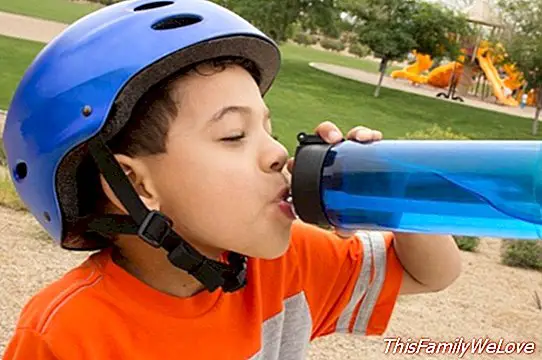Physical exercise, heat and dehydration in children

Much talk about the importance of physical exercise in childhood and during growth, but it is also true that as temperatures begin to rise we must have precautions to avoid heat problems, because the high temperatures will join the body when burning calories and there is risk of dehydration.
While we exercise, our body is burning calories, which causes our body temperature to rise. What is the result of this? What we sweat and lose water, so as more heat is more careful, we must have to avoid dehydration, especially in younger children.
As explained by the Spanish Association of Pediatrics (Aeped), "when the child begins to sweat you have to offer him quantities of liquids equal to those he loses ", that is, between a liter and a liter and a half of water for each hour of intense sports activity.
This means that Children should drink fluids before, during and after of each time a sport is played or a match is played. But, yes, smaller little by little (half a glass of water every 10 minutes, for example) and avoiding drinks with gas and caffeine.
Dehydration by sport
A person who is doing sport can notice dehydration when he begins to have intense thirst that is increasing and, right after, he feels weak or with a headache. Also, saliva is usually thick and urine scant and dark.
As soon as these symptoms appear, you should stop doing sports and drink liquid, although the best thing is to prevent this from happening through the continued and progressive drinking of liquids (it is not good, for example, not to drink anything and then take a whole bottle of water).
The best drink to hydrate while doing sport
There are many drinks that are marketed especially for athletes. As explained by pediatricians, most of them carry water, electrolytes and sugars with different concentrations, but it is not proven that they are more beneficial. In fact, these experts are clear: it is best to drink fresh water to rehydrate.
Heat stroke by exercise
The heat stroke occurs when the body is losing water through sweat to regulate its temperature but, not being able to do so because the outside temperature is very high, choose to raise its temperature to produce a fever. Then vomiting, discomfort and headache appear.
Five keys to prevent heat stroke by exercise
1. Adapt physical activity To the environmental conditions: do not do an extreme sport if the temperatures are too high
2. Hydrate correctly: drink a glass of fresh water about 15 minutes before starting the sport, continue drinking every 15 or 30 minutes while you practice sports and drink whenever you are thirsty. The ideal water temperature is 12 or 13 degrees.
3. Training: Prepare your body before any competition so that you are ready for the exercise.
4. Progressive acclimatization: make sure to start the exercise in a smooth way to adapt. It is also good to prepare for the different conditions: if for example a match will be played in a hot place, train in similar conditions previously.
5. Clothing: make it light and comfortable
Angela R. Bonachera




